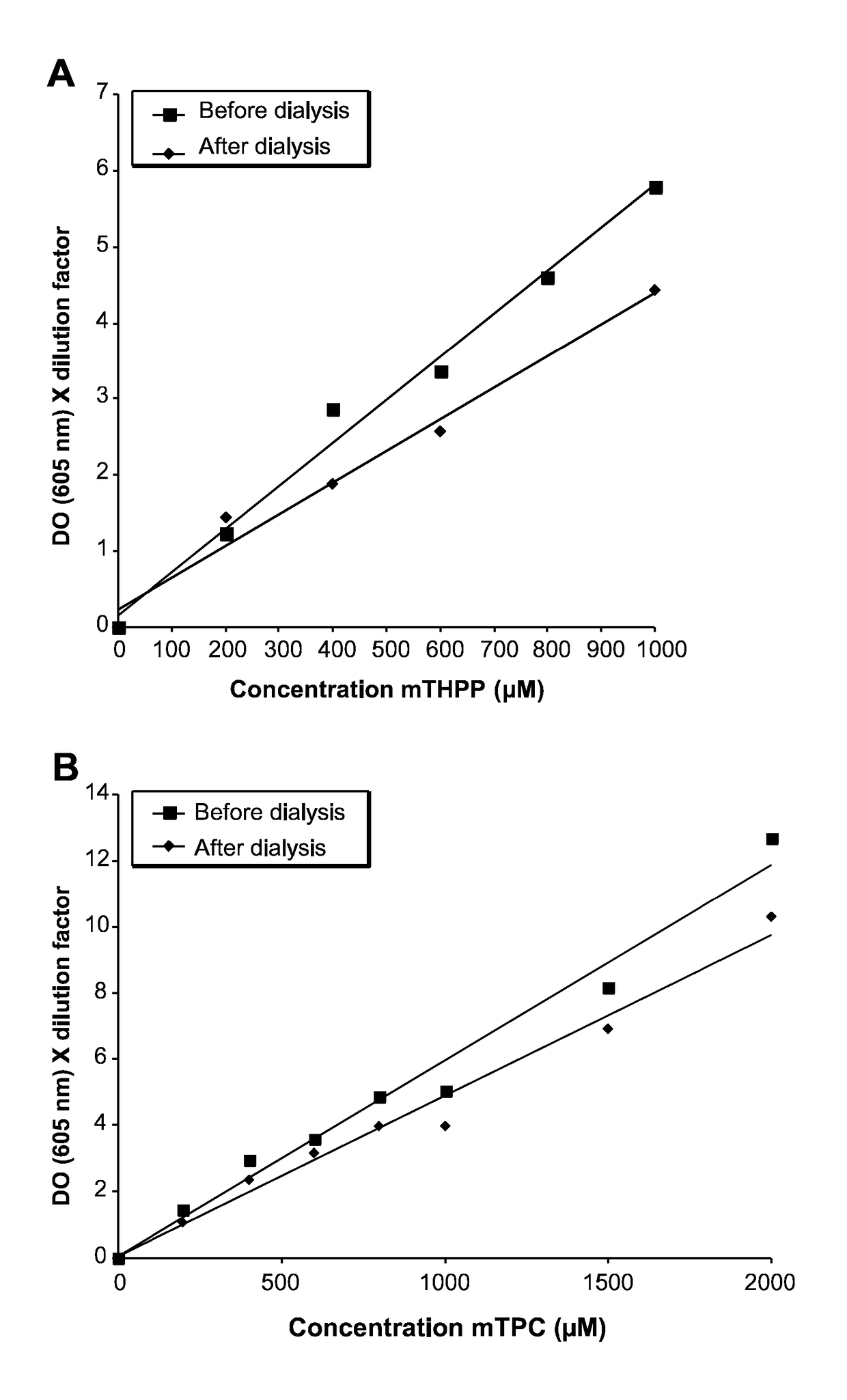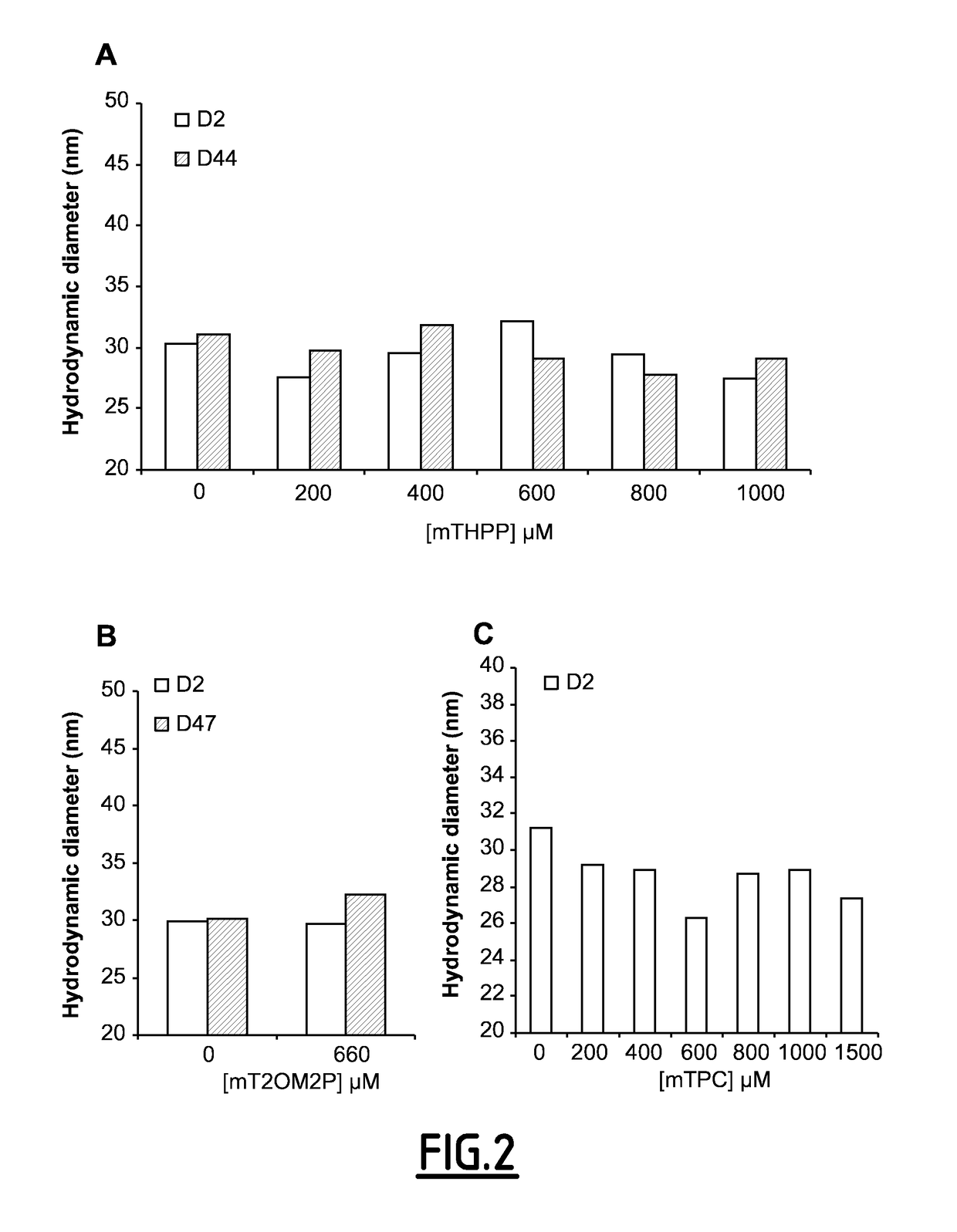Encapsulation of lipophilic or amphiphilic therapeutic agents in nano-emulsion
a technology of lipophilic or amphiphilic compounds and nanoemulsions, which is applied in the field of nanotechnology and medicine, can solve the problems of limited stability and degree of encapsulation of lipophilic compounds, and the potential cytotoxicity of polymeric nanoparticles, and achieve excellent colloidal stability, high degree of internalization, and high degree of encapsulation of therapeutic agents
- Summary
- Abstract
- Description
- Claims
- Application Information
AI Technical Summary
Benefits of technology
Problems solved by technology
Method used
Image
Examples
example 1
Preparation of a Nano-Emulsion Encapsulating Paclitaxel
[0133]A batch of 2 mL of nano-emulsion encapsulating paclitaxel (initial paclitaxel load of 1 mM, i.e. 850 μg / mL) was prepared in the following manner.
[0134]The oily phase was prepared by introducing, 190 mg of semi-synthetic glycerides sold under the trade name Suppocire® NC (Gattefossé) and 138 mg of soy lecithin (L-α-phosphatidylcholine, sold by Fluka), ≥30% phosphatidylcholine) into a suitable receptacle heated to 50° C. 17 mg of paclitaxel (sold by Sigma-Aldrich) dissolved in 1 mL of chloroform (i.e. 0.002 mmol of paclitaxel) were added to this mixture and the mixture was then homogenised by vortex mixing. The solvent was then evaporated under vacuum at 40-45° C. in a rotary evaporator while progressively reducing the pressure.
[0135]The aqueous phase was prepared by introducing 228 mg of Myrj 53 (polyethoxylated surfactant sold by Sigma-Aldrich) into a 2 mL Vial and then adding 1.38 mL (1444 mg) of a saline solution ([NaCl]...
example 2a
Preparation of a Nano-Emulsion Encapsulating a Photosensitizer (mTHPP)
[0152]A nano-emulsion encapsulating 5,10,15,20-tetrakis(4 hydroxyphenyl)-(21H,23H)-porphyrin (mTHPP) sold by Sigma-Aldrich was prepared as follows.
[0153]0.05 g of soybean oil (Sigma-Aldrich) was introduced into a suitable receptacle together with 0.150 g of semi-synthetic glycerides (sold under the trade name Suppocire® NC (Gattefossé)), and 0.100 g of soy lecithin (enriched to 75% phosphatidylcholine, sold by Lipoïd under the trade name Lipoïd® 75). A quantity of between 0.27 mg and 1.37 mg of 5,10,15,20-tetrakis(4 hydroxyphenyl)-21H,23H-porphyrin, (mTHPP sold by Sigma-Aldrich) was added to this premix in solution in dimethyl sulfoxide (DMSO). After evaporating off the solvent under vacuum, the residue was heated to 50-60° C. and the liquid mixture was kept at this temperature for emulsification.
[0154]In another receptacle, a mixture was prepared of 0.05 g of glycerol, 0.331 g of polyoxyethylene stearate having 5...
example 2b
Preparation of a Nano-Emulsion Encapsulating a Photosensitizer (mT20M2P)
[0163]Example 2A was repeated in an identical manner except that the photosensitizer was replaced by a quantity of 2.3 mg of 5,10,15,20-tetrakis(4 octadecyloxymethylphenyl)-21H,23H-porphyrin (mT20M2P, sold by Porphyrin systems) directly in the premix.
[0164]Table 4 above summarises the composition of the formulation obtained before dialysis. The mean degree of incorporation of mT20M2P in the nano-emulsion obtained, calculated from the optical density, was approximately 89%.
PUM
 Login to View More
Login to View More Abstract
Description
Claims
Application Information
 Login to View More
Login to View More - R&D
- Intellectual Property
- Life Sciences
- Materials
- Tech Scout
- Unparalleled Data Quality
- Higher Quality Content
- 60% Fewer Hallucinations
Browse by: Latest US Patents, China's latest patents, Technical Efficacy Thesaurus, Application Domain, Technology Topic, Popular Technical Reports.
© 2025 PatSnap. All rights reserved.Legal|Privacy policy|Modern Slavery Act Transparency Statement|Sitemap|About US| Contact US: help@patsnap.com



